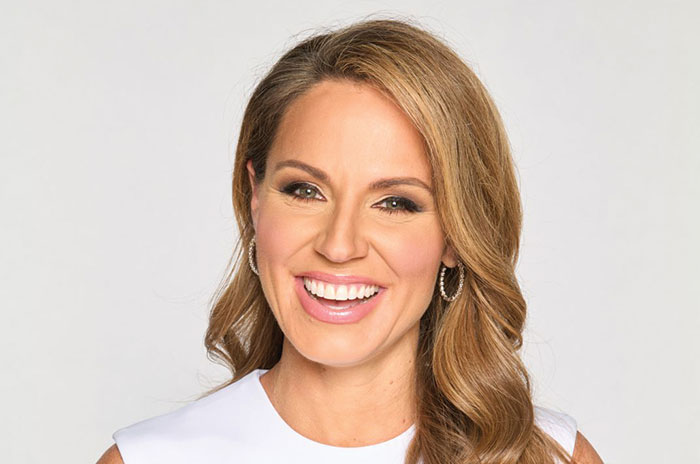 Marko Geber/Getty Images
Marko Geber/Getty Images “Ugh, is this too b*tchy?”
A few months ago, I received an email from a lawyer. She had been agonizing over hitting send to a junior associate for over 20 mins… to check in on a document that was already two hours late.
A rising star at one of the most respected firms in the world and fresh off a major promotion, this lawyer is the picture of leadership. Yet here she was, wondering if her email to one of her direct reports on an urgent matter was “nice enough” and not “too b*tchy.”
She had written it (and then rewritten it) what felt like 100 times to make sure it was direct, but not abrasive. Firm, but nice, but not too soft because this was still urgent.
As women we often feel like we have to thread the needle between being warm and likeable, and being viewed as effective, capable leaders. That’s why every email we send can feel like a litmus test.
Every email we send can feel like a litmus test.
In fact, it says everything about our patriarchal system and its myriad of double standards that so many of us have internalized the daily “is this too b*tchy?” question as a cornerstone of our communication.
You can be capable, effective and not b*tchy. Here are five ways to do that when it comes to writing better emails:
- BLOT: The average reader only spends 11 seconds per email. That’s why it’s imperative to make your opening sentence the most important sentence. Yet we often bungle this in our internal communication. Instead of starting your email with “I hope this email finds you well,” start with your BLOT: bottom line on top. In our lawyer’s case, that could have simply meant “I’m writing to check-in regarding the status of the McKenzie brief.” If you’re worried about the lack of pleasantries coming across as rude (or b*tchy), I invite you to…
- Rethink your pleasantries: Starting your emails with “I hope this email finds you well” often rang hollow in The Before Times. Taking up that precious top-of-email real estate in a raging pandemic and in a time of racial reckoning isn’t just the email version of a “command performance.” It can also come off as totally tone deaf. As Tom Herrera wrote in The New York Times, “How many times have you seen that line in an email this year and thought, ‘Well, no, this email does not find me well — I’m terrible, thanks.’ None of us are well!” That’s why if your desire to use “hope you’re well” was to connect, you’re likely missing the mark. Instead, save your pleasantries for the end of the email. Coupling it with a thank you can actually read as more sincere. An example might look something like this at the end of your email: “Thanks again for your hard work on this/for help with this/for considering my request. It’s such a stressful time, and I hope you are doing as well as possible.” Ending with personal appreciation is the most sincere way to conclude an email.
- Ditch “sorry” … 99% of the time. I will never forget an intervention-style team meeting a boss called about six years ago for our mostly female team. “We have a problem,” the boss started, and I genuinely couldn’t imagine where she was going with this. Our team was full of high-performers, and our numbers were off the charts. “I’m listening to you on the phones and reading your emails,” the boss went on. “You need to stop saying ‘I’m sorry’ when you talk to clients. Nine out of 10 times, you have nothing to be sorry for, and you’re undermining your credibility.”It was such a lightbulb moment for me. Consider how many times you’ve said “sorry to bug you” or something similar: What were you actually trying to achieve?
Omitting “sorry” doesn’t make our emails rude. It prevents us from undermining ourselves and keeps our emails confident and direct. Consider the difference between “Sorry to follow up on this” versus “Thanks for providing these status updates.”Are you actually sorry? Didn’t think so, so save “sorry” for when you mean it, so that it actually means something. And speaking of undermining credibility… - Cool it on the exclamation points. I often see women use exclamation points to demonstrate how friendly and warm they are (“Like me!!!!”), especially given email’s inherently cold and clinical format. As Larry Kim nailed in INC, “Overusing this one piece of punctuation gives your communications a distinctly middle school flavor and kills your credibility.” In addition to making you look over-eager or childish, “It makes you seem melodramatic and will give employers pause about allowing you to represent the company to partners or clients.” Exclamation point rule of thumb: You get one exclamation point per email, tops. Use it wisely. Overusing exclamation points don’t make our emails less “b*tchy.” They make them look juvenile.
- Use a question to create a call to action. So let’s start with a question here: Do you want somebody to read your email or read and reply? … That’s what I thought.Perhaps the simplest of all the writing-better-email tools is simply making sure you have a call to action. Consider the difference between simply stating, “If you could provide an update that would be great” vs. asking with a call to action, “Will you please provide an update?” Now ask yourself, which of these are you more likely to respond to? Respond faster to? Using a question isn’t rude, it’s getting the job done with effective communication.
Still apprehensive? Consider the difference between these two emails:
Your words, ideas and contributions matter. Treat them like they do and remember: To be direct isn’t b*tchy. To be concise isn’t b*tchy. To get the job done isn’t b*tchy.
Randi Braun is an executive coach, consultant, speaker and the founder of Something Major.






















 More news and opinions than at a Shabbat dinner, right in your inbox.
More news and opinions than at a Shabbat dinner, right in your inbox.